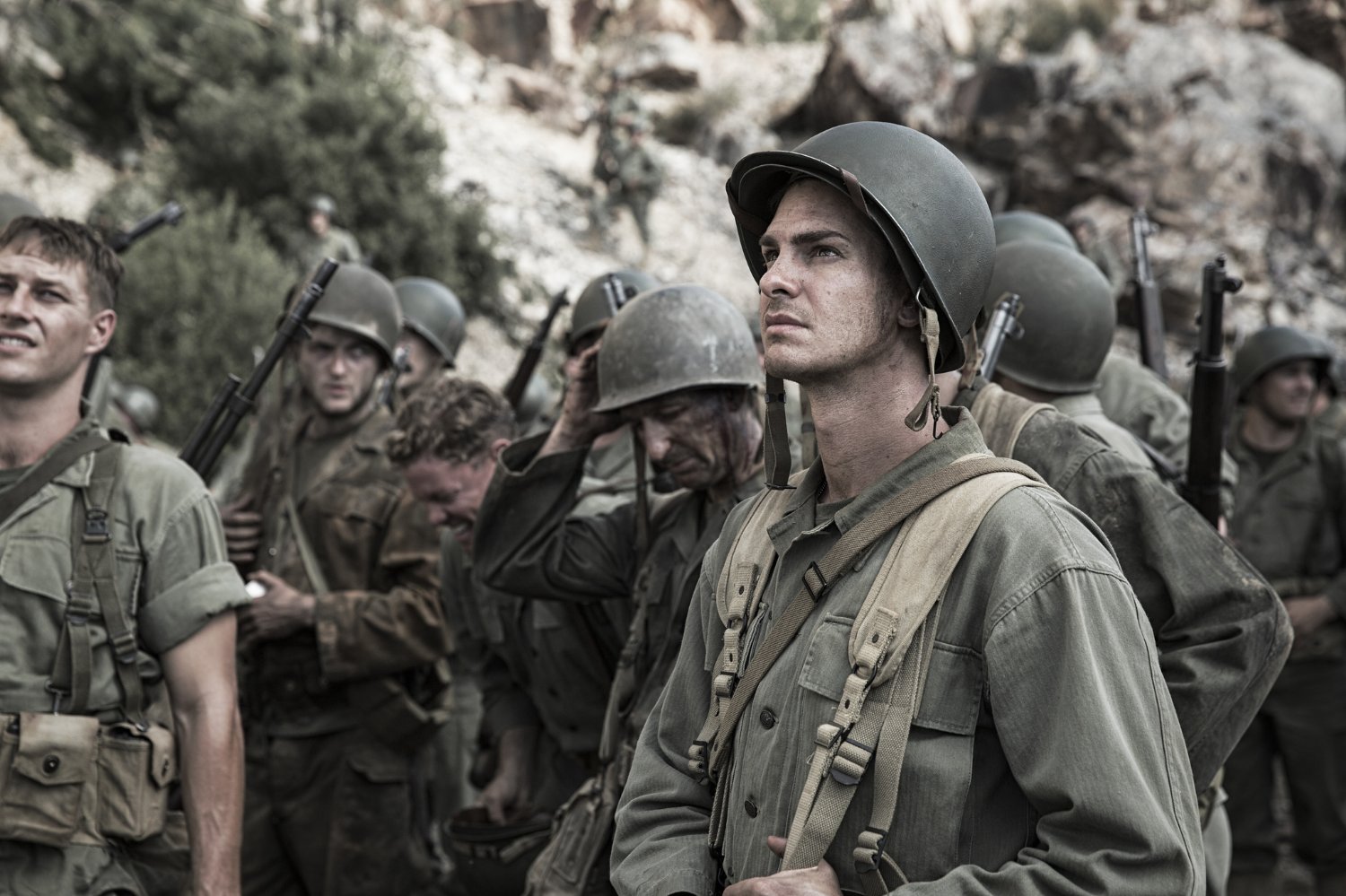
“Hacksaw Ridge” is a new film that is based on a true story that took place in the Pacific theater during World War II. The film is directed by Mel Gibson and stars acting heavyweights such as Andrew Garfield, Hugo Weaving, Vince Vaughn and Sam Worthington. Considering the lead characters from their highest-grossing films, it can be easy to see how this might be a strange cast for a forgettable movie. When seen on the big screen this couldn’t be further from the truth.
“Hacksaw Ridge” is a gritty war film that might make you want to turn in disgust at times from the graphic visuals, but the message it delivers is important and timeless. It is a film about believing in yourself and keeping your faith in a time where your future is uncertain.
Garfield plays Pvt. Desmond Doss, a young man who decides to enlist in the U.S. Army as a medic against his father’s (played by Weaving) wishes. The film walks the viewer through various life stages of Doss. We are shown important points in his life that will ultimately influence his wanting to help people in the war. These life stages are shown so that the viewer can understand what eventually pushes Pvt. Doss to become a conscientious objector to the war.
The film focuses on Pvt. Doss and his choice not to carry a firearm into battle. For this decision, he faces mass prejudice from the other men in his outfit. Cpt. Glover, played by Worthington, along with Sgt. Howell, played by Vaughn, both do a fantastic job in their respected roles. At the start of training camp, they are tough on Doss for his belief and try to persuade him to leave. Doss pushes on and training camp eventually turns into war as they are sent from boot camp to Okinawa. Their mission is to secure an area near the ocean known as Hacksaw Ridge.
The film intensifies as it tells the story of one man who saves over 70 lives after a brutal battle against the Japanese. Staying up on the ridge when all other had retreated, Pvt. Doss alone spent 12 hours dragging his fellow soldiers as well as wounded Japanese soldiers to safety.
There are many themes that seem to orient themselves around the overarching idea of helping others. There was much speculation around this being a religious film that touches on war; at least this was what its marketing campaign and film trailers led moviegoers to believe. Instead, I believe this is a war film that touches on religion. Having a director of one of the most acclaimed religious films of the 21st century, “The Passion of the Christ,” filmgoers are not wrong to expect religion to be a prominent aspect.
Still, it is important to remember that this is a film based on a true story. Outside of the marketing, I feel that Mel Gibson wanted to represent this film as what it was, a story of a man doing something heroic. Religion as a theme rides alongside others themes; unfortunately for some viewers, it will be taking a back seat to themes like heroism.
The pacing of the film was reminiscent of Stanley Kubrick’s controversial 1987 film “Full Metal Jacket.” The first half of the film focuses on Doss and him choosing to enlist. After this, to nearly the halfway point we see Doss in training camp and on his military trial. Directly after this, it’s war, war, war, all the way through the end. Many reviewers of “Full Metal Jacket’s” pacing commented that it made one film feel like two unconnected stories. Although the pacing and how the film was broken up was very similar between the two films, I found the pacing of “Hacksaw Ridge” to match the story being told. The film gave just enough time for backstory before Doss’ enlistment in the Army. The time spent in the film covering training is well used and gives enough time to establish the rest of the characters we will care about through the end of the film.
The second half is key to why I think this film is going to do very well. It is why I urge anyone with interest to go and see this film. This part of the film wasn’t shown in the trailer and is what might send some weak-stomached people running from the theater. It is, for lack of a better term, true.
The first half of the film builds up the idea that Doss is going to have to enter battle without a weapon, while the second half shows the reality of war. We see Pvt. Doss try to survive when the men around him are getting picked off one by one.
The film is this great balancing act of showing normal civilian life in one half and the gruesome horrifying life of a soldier in battle in the other. As an enthusiastic filmgoer, this caught my eye more than how much religion played a part in the film. I came out of “Hacksaw Ridge” pleased to see the story did not fall short because it felt like it needed to inject too much war or religion.
The film did not cater to one side but simply told the story, which is hard to come by in film today.

